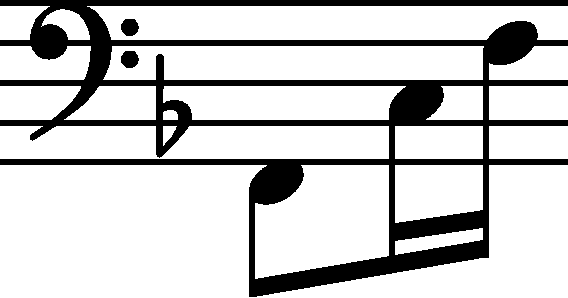



|
b. 18
|
composition: Op. 28 No. 23, Prelude in F major
..
In the main text we reproduce the beginning of the slur in accordance with the notation of A (→FC→GE). In FE, like in the previous analogous bars, the beginning of the slur was placed only just over the trilled crotchet. The ending of the slur, which clearly reaches the end of the bar in A, was interpreted in FC (→GE) differently, i.e. it led to the beginning of b. 19. According to us, that slur, when interpreted literally, resembles a tenuto-slur, which is, however, probably an inaccuracy of notation, which we do not include in the main text. category imprint: Interpretations within context; Differences between sources issues: Inaccurate slurs in A , FE revisions , Tenuto slurs |
|||||||||
|
b. 18
|
composition: Op. 28 No. 23, Prelude in F major
..
FC did not mark the change of clef, which was corrected in GE. The pencilled clef was added later by Hermann Scholtz. category imprint: Interpretations within context; Differences between sources; Source & stylistic information issues: GE revisions , Foreign hand additions in manuscripts , Errors of FC |
|||||||||
|
b. 19-22
|
composition: Op. 28 No. 23, Prelude in F major
..
The extensive crossings-out in A – the entire ending of the piece starting from b. 19 was eventually crossed out and had to be rewritten – reveal that Chopin was looking for the best way to transfer the figuration from the topmost register back to the middle range of the instrument.
category imprint: Corrections & alterations; Source & stylistic information issues: Corrections in A , Deletions in A , Accompaniment changes , Main-line changes |
|||||||||
|
b. 19
|
composition: Op. 28 No. 23, Prelude in F major
..
category imprint: Differences between sources issues: EE revisions , Errors in FE |
|||||||||
|
b. 19
|
composition: Op. 28 No. 23, Prelude in F major
..
When interpreted literally, the slur of A ends after the 1st quaver in the 2nd half of the bar; however, its shape does not suggest that Chopin would have really wanted to lead it that far. Both Fontana and the engraver of FE considered it to be inaccurate. category imprint: Graphic ambiguousness issues: Inaccurate slurs in A |


 . The notation bears traces of local corrections performed before the entire ending was crossed out, hence it seems impossible to decipher all elements of notation, not to mention determining the order of versions, without specialised studies (e.g. one can see an even earlier – crossed out separately – notation of the beginning of the 2nd half of the bar
. The notation bears traces of local corrections performed before the entire ending was crossed out, hence it seems impossible to decipher all elements of notation, not to mention determining the order of versions, without specialised studies (e.g. one can see an even earlier – crossed out separately – notation of the beginning of the 2nd half of the bar  ).
). . On the 1st beat of b. 21 one can see traces of corrections suggesting that, e.g. the initial F note was a semiquaver. Chopin then crossed out the entire notation of that bar and rewrote it on a stave below in the final version. However, the latter was also crossed out, since the accumulation of corrections and excess of bars forced the composer to rewrite b. 19-22.
. On the 1st beat of b. 21 one can see traces of corrections suggesting that, e.g. the initial F note was a semiquaver. Chopin then crossed out the entire notation of that bar and rewrote it on a stave below in the final version. However, the latter was also crossed out, since the accumulation of corrections and excess of bars forced the composer to rewrite b. 19-22.